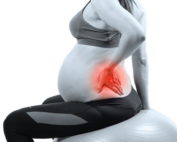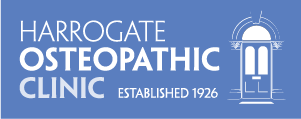The latest research suggests that one in five teenagers suffer from musculoskeletal pain to the point that they have to take painkillers, miss school or avoid playing sport. The world health organisation reports that children with musculoskeletal pain make up a significant proportion of patients for primary health care providers.
Osteopaths treat patients of all ages and many conditions that we see in adults we also see in children. We’ve listed a few of the more common paediatric conditions below for you to keep an eye out for:
-
Scoliosis: Characterised by an abnormal lateral curve of the spine. It typically appears during adolescence and may be associated with genetic factors or other underlying conditions. Common symptoms include one shoulder higher than the other, an uneven ribcage, and back pain. Osteopaths commonly treat patients of all ages with scoliosis and the same applies with children.
-
Osgood-Schlatter’s Disease: Knee pain that is mostly in very active teenagers; particularly those who play football or other kicking sports. It causes inflammation and pain around the tendon underneath the knee cap. Rest and hands on treatment are the main remedies.
-
Severs’ disease: Similar to Osgood- Schlatter’s but the pain is in the heel. The bone becomes from repetitive loading of the heel bone which then makes it inflamed. Again, rest and hands on treatment can be beneficial.
-
Juvenile Idiopathic Arthritis (JIA): Juvenile idiopathic arthritis is an autoimmune disorder that causes joint inflammation in children. It can lead to joint pain, swelling, and stiffness. Early diagnosis and management are crucial to prevent joint damage. Osteopaths are very good at spotting the signs of JIA and can help manage some of the symptoms but they would usually refer you onto your GP for blood tests for a confirmed diagnosis and medication if necessary.
-
Legg-Calvé-Perthes Disease: This condition affects the hip joint, primarily in boys between the ages of 4 and 8. It leads to a reduction in blood flow to the hip, resulting in bone damage and joint deformity. The usual symptoms are hip groin or knee pain, stiffness, muscle weakness and limping. Treatment may involve physical therapy, bracing, and, in some cases, surgery. This is another condition that osteopaths are very good at spotting.
-
Hyper-mobility: As the word suggests, this is where the joints are very flexible- in Lehman’s terms double jointed. Gymnasts and younger children are usually associated with hyper-mobility. Although hypermobility in itself doesn’t necessarily come with pain I often say that with more mobility comes less stability. By strengthening muscles around hyper-mobile joints with specific exercises from your osteopath, you can make it less likely that you have any nasty strains and sprains in the future.
-
Fractures and Sports Injuries: Children are susceptible to fractures and sports-related injuries due to their active lifestyles. Prompt evaluation and proper management, which may involve casting, splinting, or surgery, are essential for a full recovery. Sports injuries are commonly treated by osteopaths but if it’s a fracture then it’s straight to A&E!
Musculoskeletal disorders in children are a diverse group of conditions that aren’t just limited to the above. Early diagnosis and appropriate treatment are crucial to minimise the impact of these disorders and promote healthy growth and development. The management of these conditions often involves a multidisciplinary approach so we do refer patients to the GP if we feel that further imaging or tests are needed.
All of our osteopaths are experienced in treating young children and teenagers. If you feel that your child may benefit from treatment then please do not hesitate to contact us.
Latest News
Welcome Audrey!
In the fast-paced and demanding world we live in, stress and chronic pain have become increasingly prevalent, affecting millions [...]
Osteopathy For Children & Teenagers
The latest research suggests that one in five teenagers suffer from musculoskeletal pain to the point that they have [...]
The Role of Osteopathy in Post-partum Care
The post-partum period, sometimes referred to as the "fourth trimester," is a critical phase in a woman's life, marked [...]
Osteopathy for alleviating pain during pregnancy
Pregnancy, places substantial physical demands on a woman's body. As the foetus grows and the body undergoes hormonal changes, [...]
Opening Hours Update
Our latest opening hours are as follows: Monday 08:00-18:00 Tuesday 08:00-18:00 Wednesday 08:00-18:00 Thursday 10:00-19:30 Friday 08:00- 18:00 Saturday [...]





